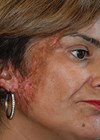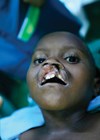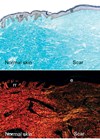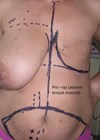Features archive for 2014
The role of skin camouflage and micropigmentation in the fields of burns and plastic surgery
Many patients who survive major burns, suffer a traumatic injury or undergo reconstructive surgery following cancer are left with both physical but also psychological sequelae. Sometimes early psychological difficulties improve with the passage of time with support from friends and...
Debate: cannulas vs. needles - Needles
It is generally agreed that the choice of cannula or needle is site and material dependent, but the injector‘s comfort and skill in creating a desired aesthetic result is also important. The two most important considerations are the aesthetic outcome...
Photoshopping the face: simulated outcomes of orthofacial surgery
Corrective facial surgeries are highly elective procedures. Outcomes depend largely on the nature of the surgery performed (requiring an in-depth knowledge of surgical techniques and anticipated soft tissue changes) and should be predictable in terms of risk and outcomes, in...
Debate: cannulas vs. needles - Cannulas
The question whether a cannula or a needle should be chosen for filler injections does not have a straightforward answer. Injection techniques, as well as filler material, cannulas, needles, injection systems, etc. have to be used in a patient specific...
IN RESPONSE TO: From PIP to DC-CIK to the Sorcerer’s Apprentice: a medico-political minefield
I am a consultant musculoskeletal physiotherapist of 20 years and I hold (2002) a masters accredited diploma in injection therapy (steroid and local anaesthetic injection techniques) as well as certificates to advanced level in cosmetic injection – dermal filler and...
2nd Chance: reconstructive surgery for life reconstruction
Many populations throughout the developing world have no access to the specialist healthcare needed by patients who have suffered severe burns, war injuries or congenital disorders. The specialties of plastic and maxillofacial surgery can make a vital contribution and PMFA...
Hair removal: a summary of techniques with a particular emphasis on the importance and versatility of electrolysis
Background and causes of excess or unwanted hair The management of unwanted body and facial hair has been a constant challenge for the human species since the dawn of human culture in the Neolithic era. Of note this was the...
The role of angiogenesis in wound healing, scarring and tissue regeneration
In the UK alone there are 175,000 people who visit Accident & Emergency departments with burns each year. This results in around 13,000 hospital admissions, of which 1000 are due to severe burns [1]. Over half of these admissions are...
Facial contouring with fillers
With the advent of hyaluronic acid fillers, safe and effective non-surgical facial rejuvenation has been advanced. Hyaluronic acid fillers are becoming increasingly popular amongst patient who seek facial enhancement. In 2013, there were over 1.8 million treatments using hyaluronic acid...
The three stages of breast reconstruction
Breast cancer has become so common that most people reading this article will know someone (either professionally or personally) who has been affected by breast cancer. One of the most common treatments for breast cancer is removal of the ‘whole’...
Looking unusual: what it’s like and how skin camouflage can help
Appearance matters, nowadays more than ever. We live in a global culture where a smooth, blemish-free and consistent complexion, symmetrical features and perfect teeth are highly prized and believed to be the passport to happiness and success. If you are...
How developments in maxillofacial surgery have contributed to improved quality of life for patients
The patient perspective, functional outcomes and morbidity are key factors that influence ‘quality of life’ [1,2]. There are many examples of how developments in oral and maxillofacial surgery have improved the outcome and ‘quality of life’ for patients with head,...
















